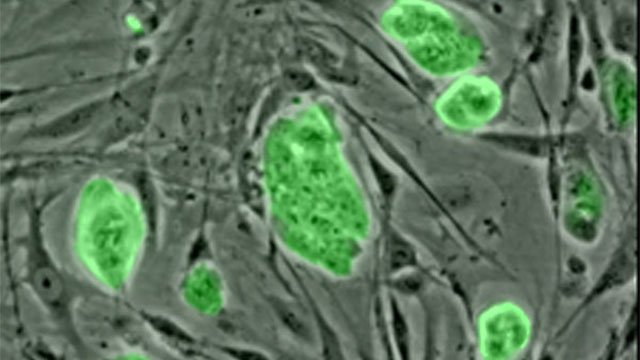
A group of Chinese scientists has come up with a chemical way to turn regular old mouse cells into cells that act just like embryonic stem (ES) cells. This finding has the potential to unleash the awesome potential of ES cells without any of the moral baggage and/or health risks usually associated with them. Since it is easy to standardize a procedure based on chemistry, this finding may take ES cells from the boutique to the factory floor. And any ES cell therapies that eventually come to fruition could become more widely available.
Embryonic stem (ES) cells have been touted as a potential treatment/cure for health issues as diverse as spinal cord injuries, diabetes and lots of things in between. ES cells are the ones found in an embryo that can go on to become every other kind of cell in an adult body.
The idea behind the utility of ES cells is that once we learn the tricks of transforming them into what we want, we can coax them into becoming cells that can replace diseased or damaged tissue. So we might turn ES cells into new Islets of Langerhan in the pancreases of people with Type 1 diabetes, or into new nerve tissue to repair a spine, or new heart tissue to heal a heart after a heart attack or…the sky is the limit!
Unfortunately, these finicky cells have failed to live up to the hype so far. Now this isn’t because they aren’t going to be useful one day. They will. It’s just really hard to figure out how to get ES cells to do what scientists want them to do. And this is made even more difficult by the limited funding ES cell research gets.
The reason funding is so scarce is that up until a few years ago, scientists needed to destroy an embryo to get ES cells for their research. Anyone who thinks that life begins at conception is obviously going to be opposed to this sort of research. Ending a life to save others is not a deal many people are willing to make.
